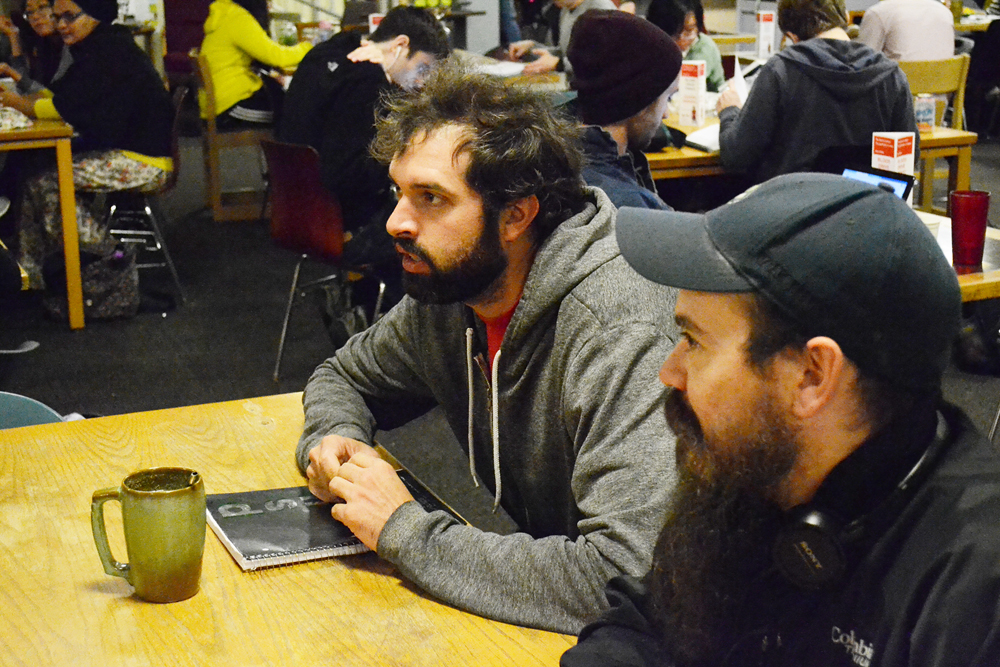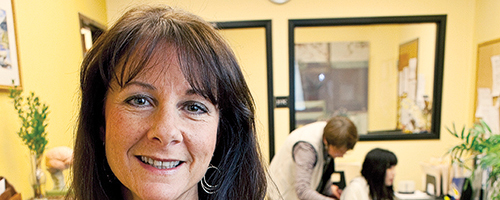Professor relates India tsunami experience
A packed room greeted Curt Peterson, professor of geology, when he reviewed his recent study of the tsunami-damaged southeast coast of India last month – but the question on everyone’s mind was whether a similar catastrophe could happen here.
It could, the professor said, although tsunami damage wouldn’t reach the Willamette Valley. Still, he warned, many Oregon coastal communities – he named Westport as an example – remain almost dangerously complacent about a potentially deadly tsunami.
Peterson joined a party of scientists allowed into India, headed by Harry Yeh of Oregon State University. Media, including television, were excluded by the Indian government.
Illustrating his points with slides taken at the scene, Peterson revealed some relatively unpublicized conclusions about the effects of the tsunami in eastern Asia. The dangerous factor wasn’t so much the height of the waves, but the fact that much coastal settlement was so low, at as little as one meter above sea level.
The city of Pondicherry, with a high seawall, suffered relatively little from the tsunami. The heaviest damage was to low-lying huts. Frequently, water flowed into buildings, filling them up so the walls burst outward, causing the roofs to collapse.
As a result of low terrain, Asian tsunami waves ran as far inland as 80 meters, or the length of six or eight football fields. As they pushed in, some sustained surge water heights of two to three meters. Much of the danger resulted from sideways surges as the wave followed low terrain in what Peterson called "an oblique attack." Even at lower levels of two to three meters and running at low velocity, the waves became deadly to children.
One of the greatest contributors to the loss of life was the fact that people in the area had never heard of a tsunami and had no idea what to expect or how to prepare for it. Contrary to widely-held belief, there was not always a long retreat of the ocean offshore just before the tsunami rolled inland. The first wave was frequently not the worst. The same tsunami could rebound off various coasts, coming back to hit the same coast a second time.
There was an unforeseen effect, which could become disastrous if a similar tsunami hit "Cascadia," the geologist’s designation of the Oregon, Washington and Northern California coast. The waves brought huge quantities of sand far inland. The combination of sand and salt water killed all vegetation near the normal ocean line.
When Peterson’s slides were over, the anxious questioning from the audience began. Can it happen here? What do we do if it does happen?
The shock wouldn’t topple any wood frame house in the Willamette valley, he explained, nor would any waves reach this far inland.
"If anything good happens out of this, it is the opportunity now to get something going on the coast," Peterson emphasized.
If there’s a major earthquake in Alaska, he said, people on our coast will have perhaps an hour to prepare.
"If the earthquake is just off the coast, you have no time, you run," he said. He recalled the evidence of the Asian experience.
"Once they could see the water coming in, people could not run fast enough," he said.
The time to run is when the earthquake starts, he warned. The start of a close-in 8.5 or 9.0 point magnitude quake would probably produce a 10-minute tsunami warning, he predicted.
The big danger he saw would occur if the heavy earthquake began at night or during stormy weather.
"People will feel the earthquake and won’t know what to do," he said. "If it’s night, they won’t necessarily know which way to run.
At Seaside, for example, the question would not be based on how much wave runup is expected but how long it takes to run away, he said.
How likely would such an event be? Peterson said it used to be believed there were no big earthquakes near the Oregon coast, but geologists now know that is not true. If one comes, the height of the wave could be higher than some of the Asian waves, perhaps five or six meters.
"It’s been 300 years since the last major earthquake event," he said. "It depends on how you figure. Do we have some time or not?"




